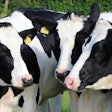WATTAgNet.com just hosted a webinar on the DDGS market and its use in poultry nutrition. For some, this co-product of ethanol production may still be an odd ingredient, but the truth is it has been successfully used for a long time in many countries.
During the presentations there were five points from our speakers, which I think were the most important, namely:
- Drought is having a major impact not only on corn plantings, but also on yield (and certainly also in other grains)
- Gasoline consumption in the U.S. has declined
- We must learn to use DDGS as an ingredient
- The issue of variability in the quality of this ingredient is a myth, as DDGS are produced by methods that had greatly improved over the last 10 or more years
- If Mexico imports 1.8 million tons of U.S. product for use in animal feed, it has to be for a valid reason
The first two items have an impact on the production of DDGS. The entire energy picture of the U.S. tells us that having more efficient and smaller vehicles, along with a poor economy, the expectations are of a lower fuel usage and maybe less ethanol blending. But obviously, this blend will have a more competitive price. This, coupled with other consumption factors in the rest of the world, creates a panorama that could force variation of ethanol production.
But, speaking more in terms of poultry production, one of the great lessons is the animal nutritionist has to learn to use this product, and above all, has to put aside the myth that there is variability in the quality. Production technology has improved so much that the resultant co-product quality is much better too. Also, as it was mentioned, ethanol producers seek the highest quality corn in the market, so the co-product would also be of high quality.
















